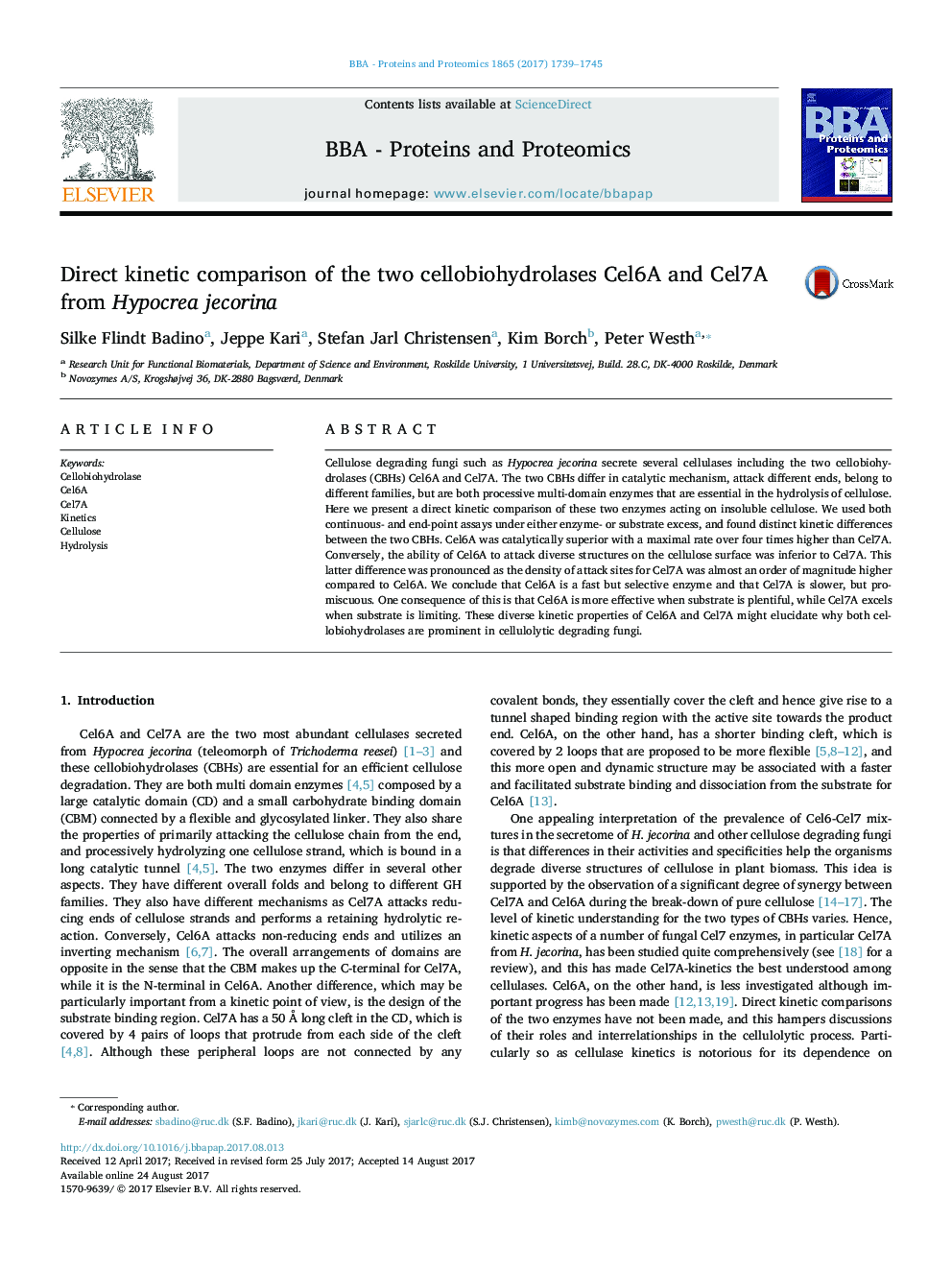| Article ID | Journal | Published Year | Pages | File Type |
|---|---|---|---|---|
| 5131849 | Biochimica et Biophysica Acta (BBA) - Proteins and Proteomics | 2017 | 7 Pages |
â¢A direct kinetic comparison of Cel6A and Cel7A elucidates their differences.â¢A conventional and an inverse Michaelis Menten approach were applied.â¢The cellobiohydrolase Cel6A was catalytically superior compared to Cel7A.â¢Cel7A is able to locate many more attack sites on the cellulose surface than Cel6A.
Cellulose degrading fungi such as Hypocrea jecorina secrete several cellulases including the two cellobiohydrolases (CBHs) Cel6A and Cel7A. The two CBHs differ in catalytic mechanism, attack different ends, belong to different families, but are both processive multi-domain enzymes that are essential in the hydrolysis of cellulose. Here we present a direct kinetic comparison of these two enzymes acting on insoluble cellulose. We used both continuous- and end-point assays under either enzyme- or substrate excess, and found distinct kinetic differences between the two CBHs. Cel6A was catalytically superior with a maximal rate over four times higher than Cel7A. Conversely, the ability of Cel6A to attack diverse structures on the cellulose surface was inferior to Cel7A. This latter difference was pronounced as the density of attack sites for Cel7A was almost an order of magnitude higher compared to Cel6A. We conclude that Cel6A is a fast but selective enzyme and that Cel7A is slower, but promiscuous. One consequence of this is that Cel6A is more effective when substrate is plentiful, while Cel7A excels when substrate is limiting. These diverse kinetic properties of Cel6A and Cel7A might elucidate why both cellobiohydrolases are prominent in cellulolytic degrading fungi.
Graphical abstractDownload high-res image (261KB)Download full-size image
